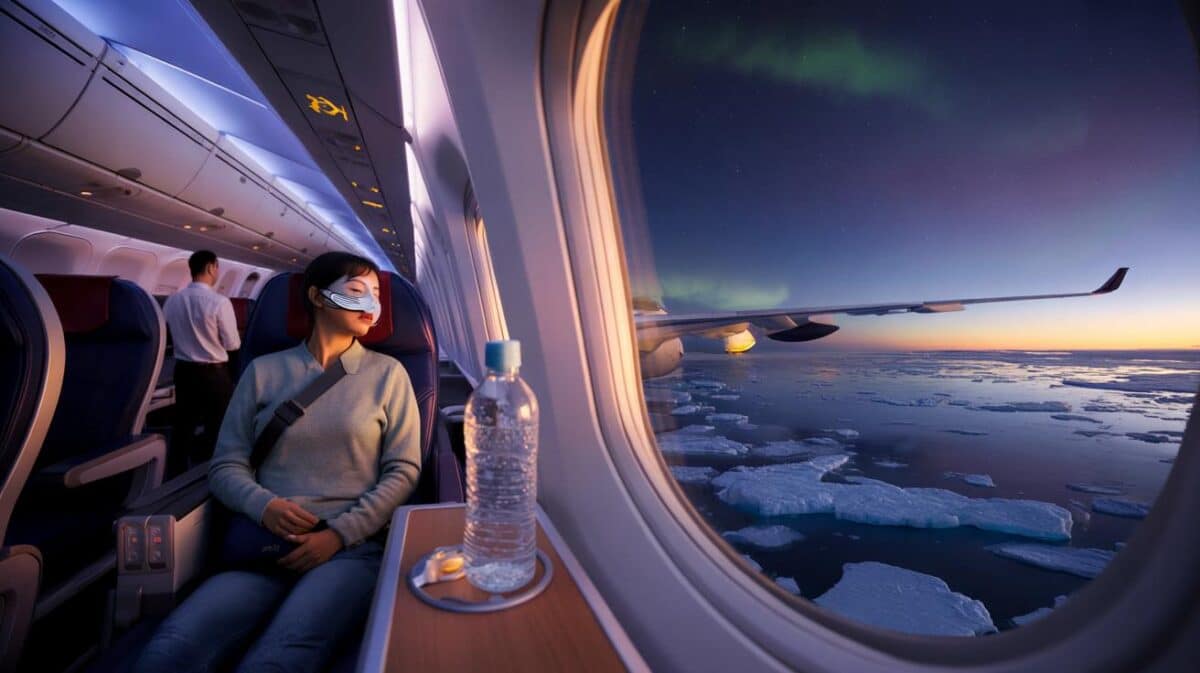NASA and Lockheed Martin’s X‑59 just finished its first mission and put a new idea on the table — that speed over land doesn’t have to shatter the day. The question now is simple, human, and big: did it sound like progress?
The runway shimmered in the desert light as the X‑59 taxied back, that impossibly long nose catching the dawn like a spear. Ground crew rolled forward, quick and calm, their headsets hidden under sun-bleached caps. On the screens inside the control room, tiny waves of pressure walked across a line, neat as a heartbeat.
We’ve all had that moment when a distant bang makes the dog flinch and the baby stir. This time, out past the dry lake and scrub, people looked up and… nothing much happened. The pilot climbed down, cheeks marked by the seal of the helmet, and just nodded, like a neighbour who’s fixed the fence. Then came the silence.
A quiet shock that could change the map
The X‑59’s first mission wasn’t about drama in the sky. It was about the ground. Sensors stretched along the test range waited for a signature that wouldn’t rattle windows, hunting for that **sonic thump** instead of a boom. Engineers speak of it like music: a softened note, trimmed of the harsh edge that made Concorde illegal over land.
Inside a trailer parked by the lakebed, a small team watched those curvy traces stack up. One pointed to a clean, rounded peak — lower than the nasty spikes we all know from old footage. There were cheers, but they were small, almost private. Numbers matter here, measured in perceived loudness, not just decibels. The early read? Closer to conversation than to a slammed door.
This is what the X‑59 was shaped to do. That needle nose isn’t a vanity project; it stretches and reshapes pressure waves so they arrive in pieces, not in one angry punch. Intakes tucked high, a cockpit without a forward window, edges blended like a soap bar — all of it conspires to pull shock away from the ground. The goal is **quiet supersonic**. The mission brought proof that the physics can play nice.
From one flight to a future you can hear — or barely
Here’s how the sausage gets made. First, you fly a controlled route and record the pressure signature with precision mics and arrays. Then you match that curve with pilot data, weather, and speed. Finally, you feed it into models that regulators trust, turning a waveform into a line in the rulebook. No glamour, just the road to new standards.
Let’s be honest: nobody reads the Federal Register for fun. Yet this is where the change lives. A lot of myths hang around supersonic travel, and they’re sticky. Not every fast jet must explode a city’s nerves. Not every overland flight ends in broken panes. If the X‑59 keeps stacking clean signatures, that narrative softens — and public acceptance follows the ear, not the headline.
People worry about what they can’t hear until they can. That’s why this first mission matters less as a stunt and more as a trust-building step. It shows that speed can grow manners.
“From the cockpit, it felt oddly ordinary — which is exactly the point. Extraordinary tech should feel ordinary to everyone on the ground.”
- What’s next: more sorties expanding the envelope, then community response flights over selected towns.
- How it helps: data goes to agencies to draft a new standard for overland supersonic noise.
- Where to watch: NASA updates, local authority briefings, and community listening sessions.
The ripple effect — tickets, towns, and trust
Imagine a route map where London–New York shrinks again, without the dread of a midday thunderclap over Kent. Airlines will watch these traces like hawks, because a new rule on noise unlocks route economics. Manufacturers beyond Lockheed Martin will tweak their designs to match the X‑59’s best curves. Airports will ask different questions: not “How loud?” but “How acceptable?”
There’s also the simple peace of mind. Communities want to feel consulted, not bulldozed. Trials built around listening — literally measuring what people notice on their porches — can reset the relationship between aerospace and everyday life. One mission won’t erase old booms from memory. It can make room for a new one.
Speed hasn’t fallen out of love with the ground; it’s learning to speak softly. If you’re picturing the future of travel, picture a pencil-slender jet drawing a hush across the map. It’s early days. It’s promising. And it’s a reminder that the best technology often earns its place not by shouting, but by almost disappearing.
| Point clé | Détail | Intérêt pour le lecteur |
|---|---|---|
| First mission, first signature | X‑59 completed an initial data-gathering sortie with low “thump” traces | Signals real progress, not just promises |
| Design that shapes sound | Long nose, blended surfaces, and intake placement spread shock waves | Explains why the aircraft looks strange — and why it works |
| Route to new rules | Measured ground response feeds regulators for overland standards | Opens the door to faster trips without the boom |
FAQ :
- What exactly is the X‑59?An experimental NASA–Lockheed Martin jet designed to fly supersonic while producing a softened “sonic thump” on the ground.
- What does “first mission” mean here?A controlled flight to capture pressure signatures and performance data, validating the quiet-supersonic design in the real world.
- How fast and how high does it fly?It’s built for around Mach 1.4 at cruising altitudes typical of long-haul jets, with the noise signature measured at ground level.
- Will it fly over cities now?Not straight away. Community response flights come next, then data goes to regulators who decide if and where overland supersonic can happen.
- When could passengers feel the benefit?If standards evolve on the back of this data, manufacturers could design airliners to those limits in the next wave of programmes.









Huge congrats to NASA and Lockheed! Quiet supersonic over land felt impossible, but this reads like the first real step. Could you share raw waveform plots and perceived loudness ranges (PLdB)? Also curious about community-response methodology—double‑blind or open notifcations? Great work; now please adress certification timelines.